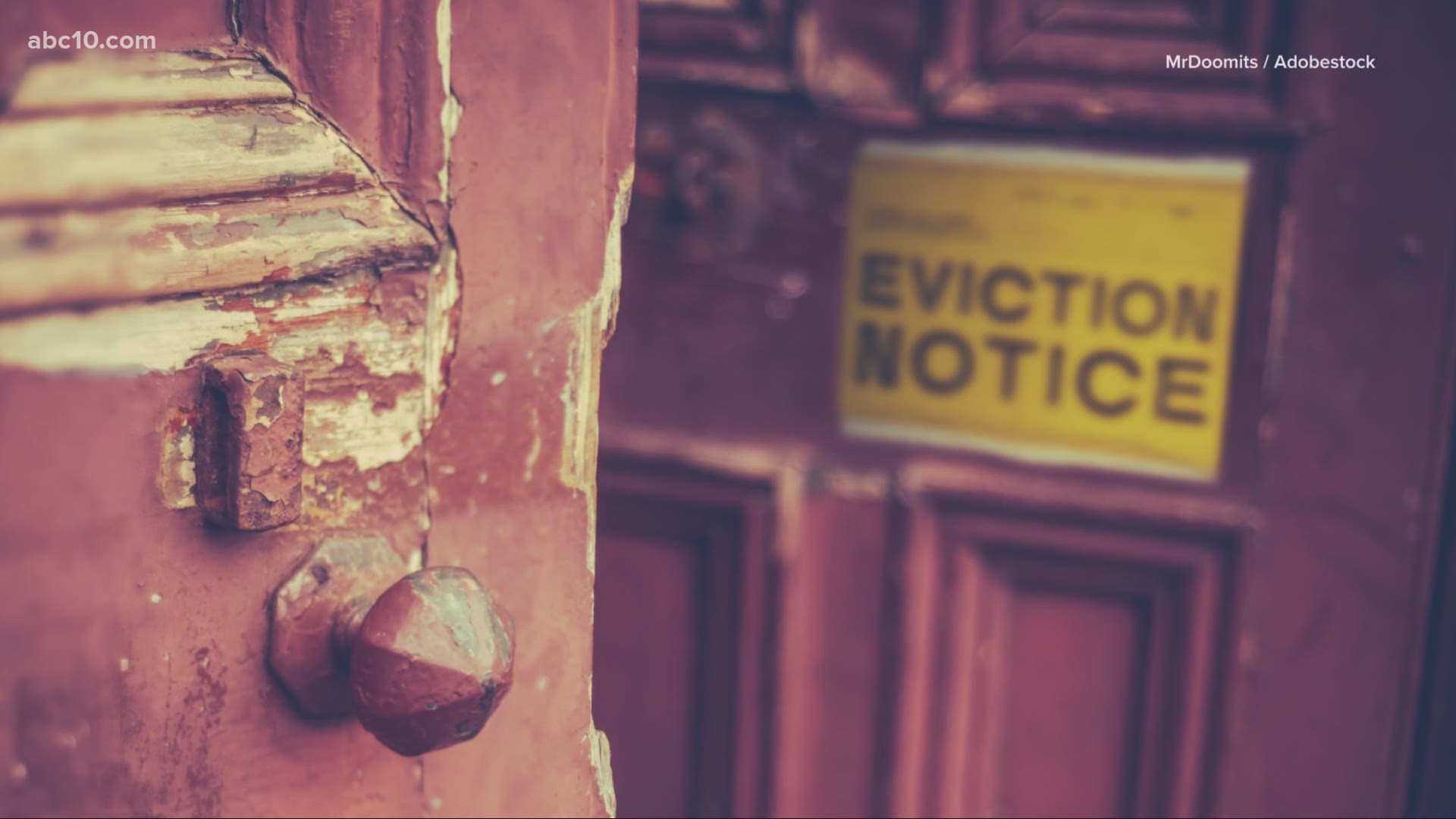STOCKTON, California — For now, California tenants are protected by Center for Disease Control and state moratoriums that prevent most evictions. Absent extensions, the CDC’s moratoriums end on Dec. 31, and the state's version is expected to expire a month later on Jan. 31.
For cities like Stockton, where more than half of the residents are renters, this could have a massive impact.
Even though there are two different moratoriums with two different ending dates, the CDC version offers certain protections that the state doesn’t.
“The CDC order, it protects tenants at any stage of the eviction process," said Monica Sousa, Directing Attorney with California Rural Legal Assistance's Stockton office (CRLA). "So, for instance, if a tenant has already gone to court, and the next step is just for the sheriff to do a lockout, CDC protections could protect those tenants from being locked out by the sheriff.”
California Rural Legal Assistance (CRLA) is a non-profit that provides legal services to low income residents of California who deal with housing issues, among other things.
In the California moratorium, tenants are required to submit a declaration to their landlord that they’re unable to pay their rent due to COVID-related financial stress. From March through August, one declaration was required, but that changed in September when one was required each month.
“If they submit that declaration to their landlord, they are protected from being evicted, and a tenant should also be paying at least 25% of the rent,” Sousa said.
That 25% will reduce the amount of back-rent owed, but it’s important for people to remember that they still need to pay back the full amount at some point.
“Tenants still do owe the rent; it's not forgiven. So, what I would say is currently tenants are supposed to be paying at least 25% of the rent. If they can, if tenants could pay more, they should try to pay more,” Sousa said.
If state protections end, landlords will be able to try collecting the balance of what’s owed, but they won’t be able to evict someone based on rent that built up during the protection period.
Beyond Jan. 31 though, landlords will be able to evict someone for not paying what’s owed each month.
“If a landlord wants to try to get the back-owed rent, that would have to be through a civil case and not an eviction case,” Sousa said.
She said if a tenant does not or is not able to pay February's rent in full, then the landlord would have to issue proper notice to the tenant, which gives the tenant an opportunity to pay in full or vacate. If they don't do either, then an eviction case could be filed in court.
Whether the eviction moratoriums are extended or not, the eviction process is confusing and stressful, and Sousa said knowing your options is a must.
“It's important that tenants know that they have rights and know what those rights are. So many times, we see tenants who receive a notice to vacate, and they just leave because they think they don't have any rights. And many times, they do, so, it's important, if they do get a notice, that you seek legal assistance.”
WATCH ALSO:

